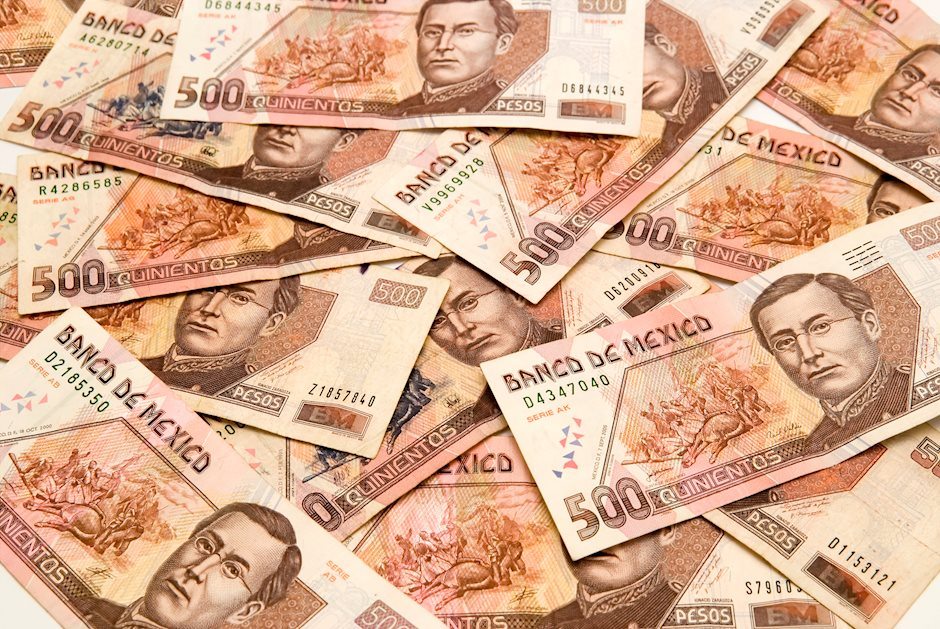Mexican Peso taps multi-month high in faltering broad-market Greenback selloff
- The Mexican Peso hit a 15-week high against the US Dollar on Friday.
- Mexico’s unadjusted Trade Balance hit a nine-month high in November.
- Friday marks the last trading day before the holiday break.

The Mexican Peso (MXN) rallied to a fresh 15-week high on Friday as the broader market took one last opportunity to sell off the US Dollar (USD) heading into the extended holiday weekend before markets pared back on Greenback shorts heading towards the Friday closing bell.
Mexico’s unadjusted Trade Balance in November beat market expectations and improved to a nine-month high of 630 million in US Dollar terms. However, market impact is likely limited after the seasonally adjusted Trade Balance grew by a scant 300K.
US data drove the market on Friday, with mixed figures pulling Greenback bids in both directions, but the US Dollar heads into the holiday break notably in the red across the board, falling back against the majority of the major currency bloc.
Daily digest market movers: Mexican Peso propped up by Greenback weakness
- MXN hit a 15-week high of 16.94 against the USD on Friday as markets sell the US Dollar off one last time before the holiday break.
- Mexico’s November Trade Balance grew by USD 630 million versus the market forecast of USD 404 million, rebounding from October’s USD 252 million deficit.
- November’s seasonally adjusted Mexico Trade Balance showed scant growth of USD 300K versus the previous month’s growth of USD 242 million, implying seasonal factors are boosting Mexico Trade Balance and are unlikely to last.
- US Dollar weakness was the general market theme on Friday before a late-day pullback as investors wrap up for the holiday break.
- The US Annualized Core Personal Consumption Expenditures (PCE) Price Index in November grew by 3.2% from the same time last year, easing back from market forecasts of 3.3% and declining further from the previous period’s 3.4% (which was also revised down from 3.5%).
- Durable Goods Orders in November lurched higher to grow 5.4%, well over the market forecast of 2.2% and clawing back October’s -5.1% (also revised upwards from -5.4%).
- Easing US inflation figures are keeping market hopes pinned for faster and sooner rate cuts from the Federal Reserve (Fed).
- Mexico’s Jobless Rate figures are due next Thursday after the holiday break.
Technical Analysis: Mexican Peso sees one last bump to close out the trading week
The Mexican Peso (MXN) has captured some ground amidst broad-market US Dollar (USD) weakness on Friday, with the USD/MXN pair definitively piercing below the 17.00 handle for the first time since late August. Mid-Friday saw a US Dollar recovery, propping the USD/MXN back up into the 17.00 handle as markets wrap up the last full trading week of 2023.
Hourly candles have the USD/MXN running well away from the 200-hour Simple Moving Average (SMA) just below 17.20, and last week’s rough intraday chop has given way to smooth declines heading into the holiday break.
Daily candlesticks show the USD/MXN accelerating into multi-month lows as the pair drops through 17.00. Meanwhile, the 50-day and 200-day SMAs are set for a bearish crossover, which will chalk in a heavy technical resistance zone to cap off any bullish recoveries heading into 2024.
USD/MXN Hourly Chart

USD/MXN Daily Chart

Mexican Peso FAQs
What key factors drive the Mexican Peso?
The Mexican Peso (MXN) is the most traded currency among its Latin American peers. Its value is broadly determined by the performance of the Mexican economy, the country’s central bank’s policy, the amount of foreign investment in the country and even the levels of remittances sent by Mexicans who live abroad, particularly in the United States. Geopolitical trends can also move MXN: for example, the process of nearshoring – or the decision by some firms to relocate manufacturing capacity and supply chains closer to their home countries – is also seen as a catalyst for the Mexican currency as the country is considered a key manufacturing hub in the American continent. Another catalyst for MXN is Oil prices as Mexico is a key exporter of the commodity.
How do decisions of the Banxico impact the Mexican Peso?
The main objective of Mexico’s central bank, also known as Banxico, is to maintain inflation at low and stable levels (at or close to its target of 3%, the midpoint in a tolerance band of between 2% and 4%). To this end, the bank sets an appropriate level of interest rates. When inflation is too high, Banxico will attempt to tame it by raising interest rates, making it more expensive for households and businesses to borrow money, thus cooling demand and the overall economy. Higher interest rates are generally positive for the Mexican Peso (MXN) as they lead to higher yields, making the country a more attractive place for investors. On the contrary, lower interest rates tend to weaken MXN.
How does economic data influence the value of the Mexican Peso?
Macroeconomic data releases are key to assess the state of the economy and can have an impact on the Mexican Peso (MXN) valuation. A strong Mexican economy, based on high economic growth, low unemployment and high confidence is good for MXN. Not only does it attract more foreign investment but it may encourage the Bank of Mexico (Banxico) to increase interest rates, particularly if this strength comes together with elevated inflation. However, if economic data is weak, MXN is likely to depreciate.
How does broader risk sentiment impact the Mexican Peso?
As an emerging-market currency, the Mexican Peso (MXN) tends to strive during risk-on periods, or when investors perceive that broader market risks are low and thus are eager to engage with investments that carry a higher risk. Conversely, MXN tends to weaken at times of market turbulence or economic uncertainty as investors tend to sell higher-risk assets and flee to the more-stable safe havens.
Banxico FAQs
What is the Bank of Mexico?
The Bank of Mexico, also known as Banxico, is the country’s central bank. Its mission is to preserve the value of Mexico’s currency, the Mexican Peso (MXN), and to set the monetary policy. To this end, its main objective is to maintain low and stable inflation within target levels – at or close to its target of 3%, the midpoint in a tolerance band of between 2% and 4%.
How does the Bank of Mexico’s monetary policy influence the Mexican Peso?
The main tool of the Banxico to guide monetary policy is by setting interest rates. When inflation is above target, the bank will attempt to tame it by raising rates, making it more expensive for households and businesses to borrow money and thus cooling the economy. Higher interest rates are generally positive for the Mexican Peso (MXN) as they lead to higher yields, making the country a more attractive place for investors. On the contrary, lower interest rates tend to weaken MXN. The rate differential with the USD, or how the Banxico is expected to set interest rates compared with the US Federal Reserve (Fed), is a key factor.
How often does the Bank of Mexico meet during the year?
Banxico meets eight times a year, and its monetary policy is greatly influenced by decisions of the US Federal Reserve (Fed). Therefore, the central bank’s decision-making committee usually gathers a week after the Fed. In doing so, Banxico reacts and sometimes anticipates monetary policy measures set by the Federal Reserve. For example, after the Covid-19 pandemic, before the Fed raised rates, Banxico did it first in an attempt to diminish the chances of a substantial depreciation of the Mexican Peso (MXN) and to prevent capital outflows that could destabilize the country.
Author

Joshua Gibson
FXStreet
Joshua joins the FXStreet team as an Economics and Finance double major from Vancouver Island University with twelve years' experience as an independent trader focusing on technical analysis.
















